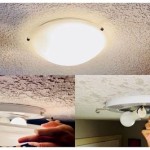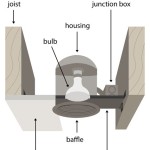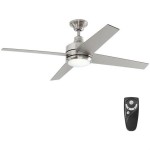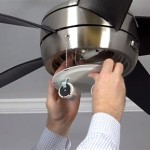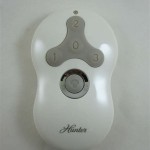Adding a Second Ceiling Light: A Comprehensive Guide
Enhancing the illumination in a space can uplift its ambiance and functionality. Adding a second ceiling light is a practical and efficient way to achieve this. Here's a comprehensive guide to help you navigate the process seamlessly:
1. Determine Lighting Needs
Assess the purpose of the room and the desired lighting effect. Consider the size of the space, natural light availability, and the type of activities performed. Determine if you need general, task, or accent lighting.
2. Choose the Right Light Fixture
Select a light fixture that complements the interior decor and the required lighting needs. Consider the style, size, shape, and material of the fixture. Ensure it fits the ceiling height and does not obstruct movement or overhead objects.
3. Plan the Placement
Decide on the optimal placement of the second light fixture. Consider the existing light source, room layout, and areas that require additional illumination. Mark the desired location on the ceiling.
4. Electrical Wiring
Run electrical wiring from the existing electrical box or circuit to the new fixture location. Ensure the wires are appropriately sized for the amperage and voltage requirements. Secure the wires using approved methods such as wire nuts, junction boxes, and conduit.
5. Install the Mounting Bracket
Attach the mounting bracket to the ceiling at the marked location. Most light fixtures come with mounting brackets or crossbars. Follow the manufacturer's instructions for proper installation and ensure secure mounting.
6. Connect the Wires
Connect the electrical wires to the wires on the light fixture. Typically, black wires connect to black wires, white wires to white wires, and ground wires (green, bare, or striped) to the fixture's ground screw or terminal.
7. Mount the Light Fixture
Carefully lift the light fixture onto the mounting bracket and secure it according to the manufacturer's instructions. Ensure a snug fit and a tight connection to prevent any wobbling or electrical hazards.
8. Install the Bulbs or LEDs
Install the appropriate bulbs or LEDs into the light fixture. Check the recommended wattage or lumen output for the desired brightness level. Screw in the bulbs or insert the LEDs correctly.
9. Test the Light
Turn on the electrical power and test the operation of the new light fixture. Ensure that it illuminates properly and there are no flickering or buzzing noises. Adjust the bulbs or LEDs if necessary to achieve the desired lighting effect.
Additional Tips
- Consult an electrician for any complex electrical work to ensure safety and code compliance.
- Consider the height of the ceiling and the length of the fixture to maintain adequate headroom and avoid any obstruction.
- Use LED bulbs or energy-efficient lighting options to reduce energy consumption and extend the lifespan of the fixtures.
- Clean the light fixtures regularly to maintain optimal light output and prevent dust accumulation.
- Replace bulbs or LEDs promptly when they burn out to ensure continuous illumination.
By following these steps, you can successfully install a second ceiling light and enhance the lighting in your space. Whether you're looking to brighten up a dimly lit area, create a specific ambiance, or simply add a touch of style, an additional ceiling light can significantly improve the functionality and aesthetics of any room.
Adding A Second Light To Double Switch Diy Home Improvement Forum

Adding An Extra Light From A Switch

Can I Splice Into This And Add A Second Ceiling Fan R Askelectricians

Off Center Lighting Solutions Dining Room Inspiration Love Renovations

Hallway Inspiration Ceiling Lights We Re Crushing On Chris Loves Julia

How To Wire A Ceiling Fan For Separate Control Fo The And Light

How To Add An Extra Pendant Light Existing Switch Lighting Electrical Security B Q

How To Replace An Old Fluorescent Light Fixture Young House Love

How To Fit Ceiling Lights Lighting Electrical Security B Q

How To Install Ceiling Light Homeserve Usa
Related Posts


